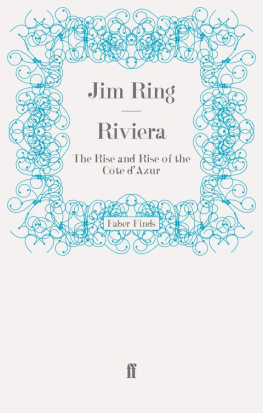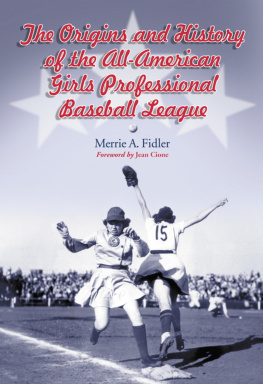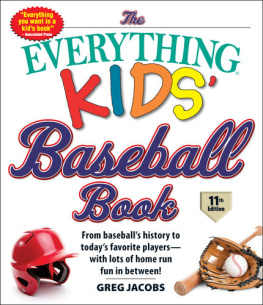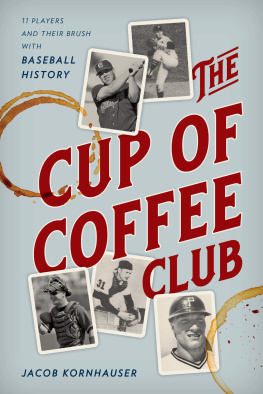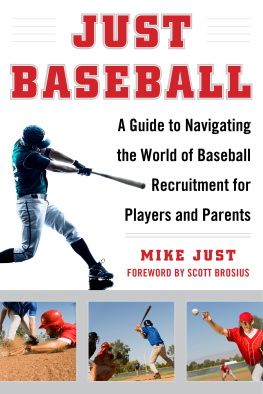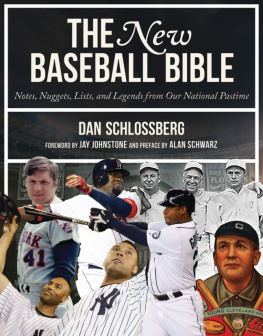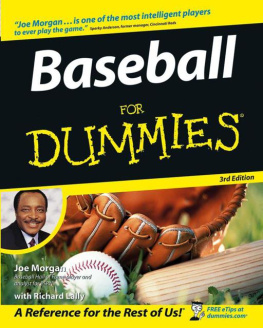Ring does not bring comfort to those comfortable with the status quo in baseball. She raises tough questions and follows up with a poignant account of the girls and women who must continue to fight for their place on the field. Meticulously researched, eloquently told.
Jennifer Ring has written a book that fills a painful gap in baseball history. It is so much more than the story of the playing careers of a group of ballplayers. It is an examination, through the words of the players themselves, of their trials and struggles to be accepted as ballplayers.
Leslie Heaphy, associate professor of history at Kent State University at Stark and coeditor of Encyclopedia of Women in Baseball
A Game of Their Own
Voices of Contemporary Women in Baseball
Jennifer Ring
University of Nebraska Press | Lincoln and London
2015 by Jennifer Ring
Cover image is from the interior
Author photo by Theresa Danna-douglas
Portions of the introduction originally appeared as Invisible Women in Americas National Pastime... or, Shes Good. Its History, Man, by Jennifer Ring, in Journal of Sport and Social Issues 37, no. 1 (2013): 5777.
Portions of chapters 1 and 3 originally appeared as Americas Baseball Underground: Invisible Women in the National Pastime, by Jennifer Ring, in The Cooperstown Symposium on Baseball and American Culture, 20112012, ed. William M. Simons, pp. 16078. 2013 and reprinted by permission of McFarland & Company, Inc., Box 611, Jefferson NC 28640, www.mcfarlandpub.com.
Portions of chapter 3 originally appeared as American Women Play Hardball in Venezuela: Team USA Battles Invisibility at Home, Is Celebrated Abroad, and Faces Gunfire at the Womens World Cup, by Jennifer Ring, in The Baseball Research Journal 41, no. 1 (Spring 2012): 5356. 2012 by the Society for American Baseball Research and reprinted by permission of the University of Nebraska Press.
All rights reserved
Library of Congress Cataloging-in-Publication Data
Ring, Jennifer, 1948
A game of their own: voices of contemporary women in baseball / Jennifer Ring.
pages cm
Includes bibliographical references and index.
ISBN 978-0-8032-4480-1 (cloth: alk. paper)
ISBN 978-0-8032-6994-1 (epub)
ISBN 978-0-8032-6995-8 (mobi)
ISBN 978-0-8032-6996-5 (pdf)
1. Baseball for womenUnited States. 2. Softball for womenUnited States. 3. Women baseball playersUnited States. I. Title.
GV 880.7. R 56 2015
796.357082dc23
2014042618
The publisher does not have any control over and does not assume any responsibility for author or third-party websites or their content.
Contents
There is a national womens baseball team in the United States. Team USA has medaled in every international competition it has played in for the past decade, but it is virtually unknown: one of the best kept secrets in American sports.
Where did the ballplayers on the USA Baseball Womens National Team come from? The story should not be mysterious: the national team in every sport comprises the best athletes in the nation in their sport. The stories of Americas best athletes follow a fairly predictable pattern: The athletes begin to play their sport at a very young age, often influenced in their choice of sport by parents and siblings or an important coach or role model. They show precocious athletic ability. Their natural talent appears early in life and earns them admiration and encouragement, coaching, private lessons, participation in skills camps and clinics, and a rapid rise to highly competitive levels of play. Some are pushed to succeed by parents with hopes of wealth, fame, and college scholarships for their child; others push themselves, perhaps for similar reasons. But it takes commitment, hard work and discipline, and the sacrifice of some of the joys of childhood to become sufficiently accomplished by adolescence to compete for a place on the national team.
This path and its rewards have become amplified in recent years for all youth sports, but it has been open to girls only since 1972, when Title IX was passed. Todays most visible women athletes are still clustered in individual sports, while very few female team athletes have an opportunity to earn a living at their sport, much less become wealthy. The women team athletes who try to play professionally after college find more opportunities in Europe than in the United States.
Debate about whether intense focus on one sport throughout childhood is physically and emotionally healthy for young athletes has received plenty of attention, although the phenomenon appears to be here to stay. Whether disproportionate wealth bestowed on male athletes is good for our culture and whether female athletes should aspire to that inflated celebrity are also issues for discussion. But even without opportunities for wealth and fame, athletic girls have embraced the opportunities to participate in team sports that were opened when Title IX passed.
The stories of the USA Baseball Womens National Team diverge from the usual path of women athletes, even postTitle IX. Girls who play baseball have barely benefited from that pivotal piece of legislation. The women of Team USA have reached the pinnacle of their sport without encouragement or infrastructure. Indeed, most of the players whose biographies are included in this book were actively discouraged from playing baseball. None had easy access to baseball teams after the age of twelve, most were the only girl on their team or in their league, and after age twelve, most battled to find a team to play on at all.
Still, there are some similarities with girls who are accomplished athletes in other team sports. The players on the USA Baseball Womens National Team are American girls from across the nation, of diverse racial, ethnic, and economic backgrounds. Most were exposed to baseball early in life and fell in love with the game immediately. All knew they were athletes as soon as they were aware of anything about themselves, and all had a bat and ball in hand before kindergarten. Some had a father or a brother or even a mother who introduced them to the game. Some had parents who signed them up for Little League without giving the specific sport much thought. There was no softball league in the neighborhood; or the local Little League was a safe place for a working mother to leave her kids on Saturdays; or baseball was simply the game all the kids in the neighborhood were playing, and their daughters wanted to play with the boys who were their neighborhood friends. Then baseball itself did the rest. The girls felt at home on a baseball diamond and discovered something important about themselves. This is not a mysterious process.
The mystery is why, no matter how good they were, all the girls who grew up to play on the USA Baseball Womens National Team were told to leave baseball at age twelve and to find another sport. Most obliged. A few refused to and continued with baseball for as long as they could. Baseball reappeared later for all of them, and they responded once again to its call and followed it to Team USA .


